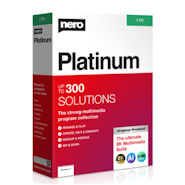Here’s an overview of ten AI tools that reshaped my workflow, spanning content creation, ideation, art generation, and multimedia editing:
Ten AI tools that reshaped my workflow
1. Blaze.ai
Blaze.ai automates social posts, blogs, newsletters, and landing pages in your unique brand voice with a single click. It learns your style from existing content, ensuring every draft matches your tone perfectly. I use it to brainstorm topics, generate outlines, and draft full articles in moments.
Deep integrations let me publish directly to WordPress and social platforms without switching tools.
2. Google Gemini
Google’s Gemini handles text, images, and even light coding in a single interface. Its Live video support helps me troubleshoot hardware setups or diagnose issues on the spot. Whether I’m researching data, generating quick summaries, or creating visuals, Gemini’s flexible models adapt to the task at hand and deliver useful insights in seconds.
3. ChatGPT
ChatGPT offers a conversational interface that answers questions, brainstorms ideas, and helps with writing and learning. I use it to refine messaging, draft emails, and outline projects faster than traditional research. Its plugin ecosystem extends functionality into data analysis, calendar management, and live web browsing when I need up-to-date facts.
4. Leonardo.ai
Leonardo.ai brings AI-driven art generation to my toolkit with full style control and video support. It’s my go-to for prototyping UI concepts, creating social media visuals, and experimenting with art styles in seconds. The platform offers models from anime characters to realistic scenes, reducing what used to take hours in Photoshop down to minutes.
5. Stable Diffusion
Stable Diffusion is a free, open-source text-to-image generator for high-quality art, anime, and photorealistic images. Its web interface transforms simple prompts into blog headers and presentation slides instantly. I especially appreciate the ability to fine-tune negative prompts to eliminate unwanted artifacts and get exactly the look I want.
6. Clipchamp
Clipchamp’s AI video editing tools—like automatic transcription, noise suppression, and background removal—are free and intuitive. I cut together tutorial clips by typing edits, then polish audio with one-click filters, cutting production time on short-form videos in half. Batch processing and smart templates make it easy to maintain a consistent style.
7. Adobe Express
Adobe Express integrates generative features—insert or remove objects, smart templates, and direct social posting—into a browser-based editor. I craft marketing graphics with layout suggestions, swap out images on the fly, and publish directly to TikTok or Instagram without leaving the app. It’s perfect for quick turnarounds.
8. DALL·E
DALL·E turns natural-language prompts into imaginative images, from whimsical illustrations to realistic renderings. I use it to generate concept art for articles, storyboards for videos, and custom icons for presentations. Its simple text-to-image workflow lets me iterate rapidly on visual ideas.
9. Midjourney
Midjourney excels at crafting bold, dream-like visuals by letting users rate outputs and guide its creative direction. I tap it for unique cover art and motivational posters that stand out on social feeds. Its artistic unpredictability often sparks fresh ideas I wouldn’t have thought of myself.
10. Descript
Descript’s AI editing treats video and audio like text—delete a word and it removes the corresponding media automatically. I refine podcasts and screencasts by editing the transcript, add captions in one click, and export polished episodes without juggling multiple apps. It’s transformed my post-production workflow.





 Create professional websites and online shops without programming:
Create professional websites and online shops without programming:
